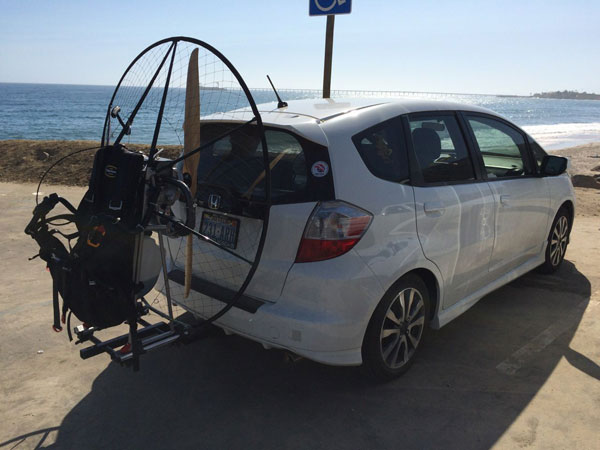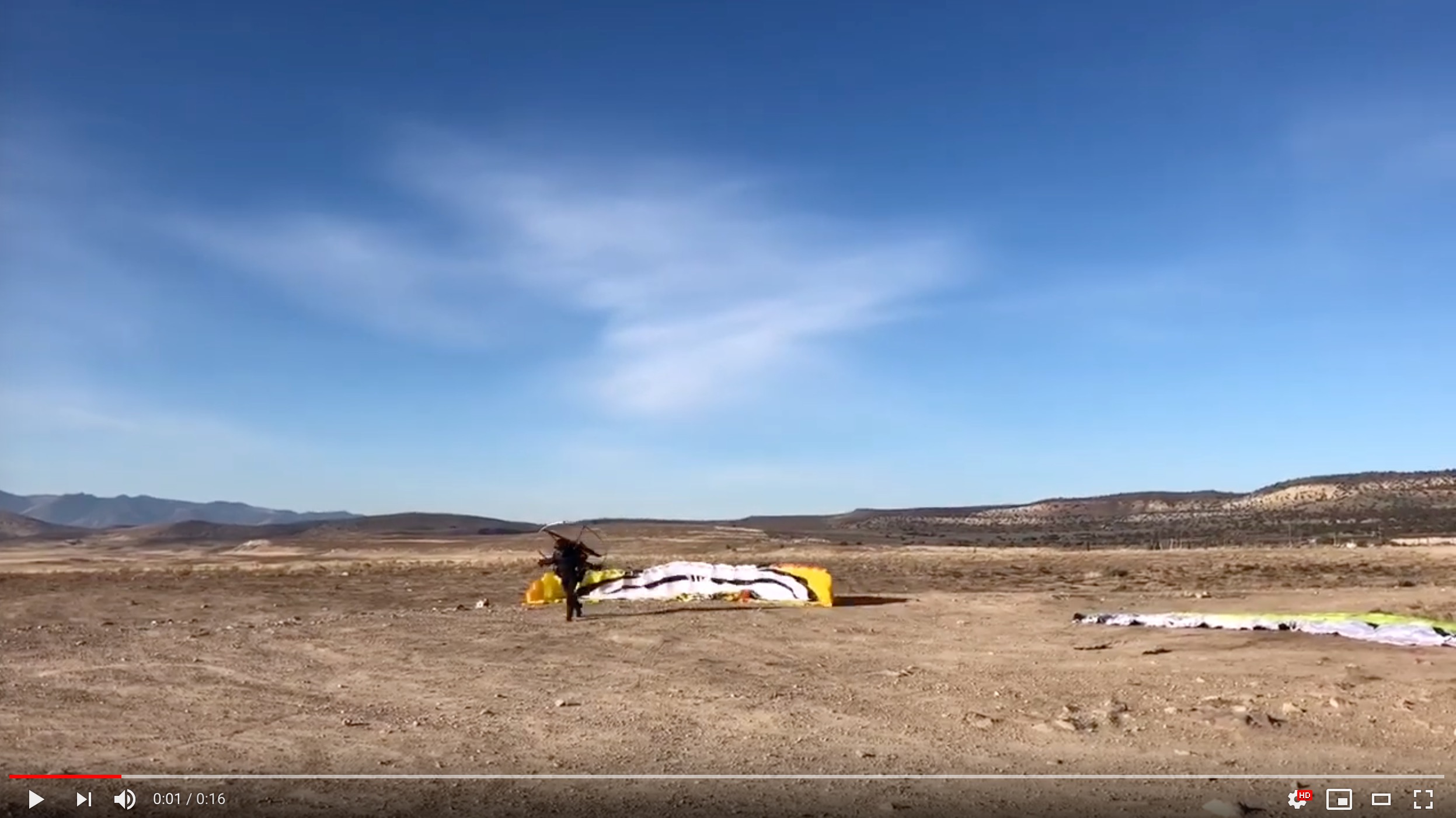Frequently Asked Questions
There are inherent risks associated with all forms of aviation but these risks are mitigated by operating your Paramotor and wing within the guidelines outlined in the owners manual and within your skills and limitations. The short answer is YES (honestly, it’s as safe as YOU make it to be)…It’s one of the easiest and safest forms of flight. The #1 key to safely enjoying this sport is good decisions making skills. You need to understand the glider and it’s limitations and your skills and their limitations as well. A good training program will help you to develop the skills and habits to enjoy this hobby for many years to come.
Fortunately, you are flying a glider…so you just glide down and land. During training, all of your landings are done with the motor off, so you will be used to coming down and landing without your motor. As long as you fly within gliding range of a safe landing spot, engine failures are nothing more than an inconvenience.
No. Paramotoring in the United States falls under Federal Aviation Regulations (FARs) part 103. It states that no license, medical certificate, registration, or training is required to fly. You are required to fly during daylight hours (sunrise - sunset) and stay away from congested areas and you can’t carry passengers without a waiver. Your ground school training will go in-depth on general regulations and airspace rules.
The good news is that there are A LOT of good schools and instructors out there. The usppa.org website is a good place to start in your search for an instructor or school. Keep in mind that a good pilot doesn't necessarily mean they'll be a good instructor and vice versa. You want to talk to your potential instructor and get a feel for their style and approach. You don't need a Nascar driver to teach you how to drive a car and you don't need a daredevil pilot to teach you how to fly. If you want to learn crazy acrobatic tricks, then pick an instructor who can eventually teach you those tricks. if you want to fly calm and slow, pick someone who can teach you just that. In the end, the instructor/school will only get you to the point of flying confidently alone. After that, you develop your skills on your own and you can attend further training like SIV courses but it's mostly you alone with time developing your own skills. The search for a school/instructor can feel frustrating at first because some places feel very pushy or belittling of other brands or schools. Keep looking! There are lots of good instructors and lots of good options out there. Search for local facebook groups of paramotor pilots in your area and talk to them, go watch them fly and try to meet people in person before you make a decision. If you have any questions at all, feel free to reach out to us. Even if you don't train with us, we'll give you our honest opinions about used gear or tips for picking wings or things like that, even the brands we don't sell because the truth is that almost all the brands of wings and motors are good. Good luck with the search and we hope see you soon in the air!
Almost anywhere…avoid congested areas, busier airports (don’t fly within 5 miles of an airport with a control tower), and you can’t takeoff/land in national parks and some state parks. You will learn all the details in ground school. There are many Facebook groups of local pilots who can indicate where the best local launch sites are and where to fly locally. Be courteous to neighbors and land owners to minimize complaints.
We generally fly in the morning and the evening when conditions are calm. Experienced pilots can fly in stronger conditions. Weather and wind limitations also depend on where you are. Coastal winds coming off the water are smooth and stable while winds in the mountains or over land may be turbulent and unpleasant to fly in. You will learn about weather and wind conditions in ground school.
We cover all the basics in 8 full days of training (weather permitting). Most people will be ready to fly on the 3rd or 4th day of training. After your training, you’ll continue to learn and develop your skills on your own.
Yes. Paragliding or free flying is when you fly with your same wing but a different harness (without the motor). It can be a lot of fun! You’ll need a mountain to launch from or some kind of ridge where you can get lift. Check out the video of several of us free flying in California.
No. Routine seasonal maintenance like cleaning/changing the spark plug will keep your Paramotor running smoothly for a long time. Most of us end up learning as we go. There are vast resources in each community and online to assist with any mechanical or maintenance issues. Learning these things is part of the fun, but if you don’t want to learn it at all, there is always someone who can do it for you if you’re willing to pay, just like with your own car.
Generally, the same type of gas you use in your car but mixed with 2-stroke oil. It’s recommended to use the highest octane possible, like premium. We use 91 Octane Ethanol Free in our school motors. Several gas stations have the right gas. You just mix it with the oil that is available online or at most motorcycle or recreation shops. It’s really easy!
A truck is convenient but certainly not necessary. Many people transport their Paramotor using a cargo trailer hitch as pictured below. Others use a trailer.

Paramotors burn just under 1 gallon of gas per hour, so you can average the cost with oil at about $5/hour. Other maintenance costs would include new belts, spark plugs, and other minor things at 25, 50, or 100 hours of flight. Paramotoring is one of the most cost-effective ways to enjoy a flight. The initial cost of training is $1250 - $2000 (depends on if you buy gear or rent), new gear motor+wing will range between $8000 - $12,000. Used gear will range between $6000 - $9,000. The only other expenses to factor in are helmet ($100 - $400 with comms), reserve parachute ($500+ highly recommended), gloves ($15), radio to communicate with other pilots ($35), GoPro or other cameras to capture your epic adventures ($200+).
Taking a passenger or "tandem" fliying is possible with the correct equipment and training. A special license is required.


